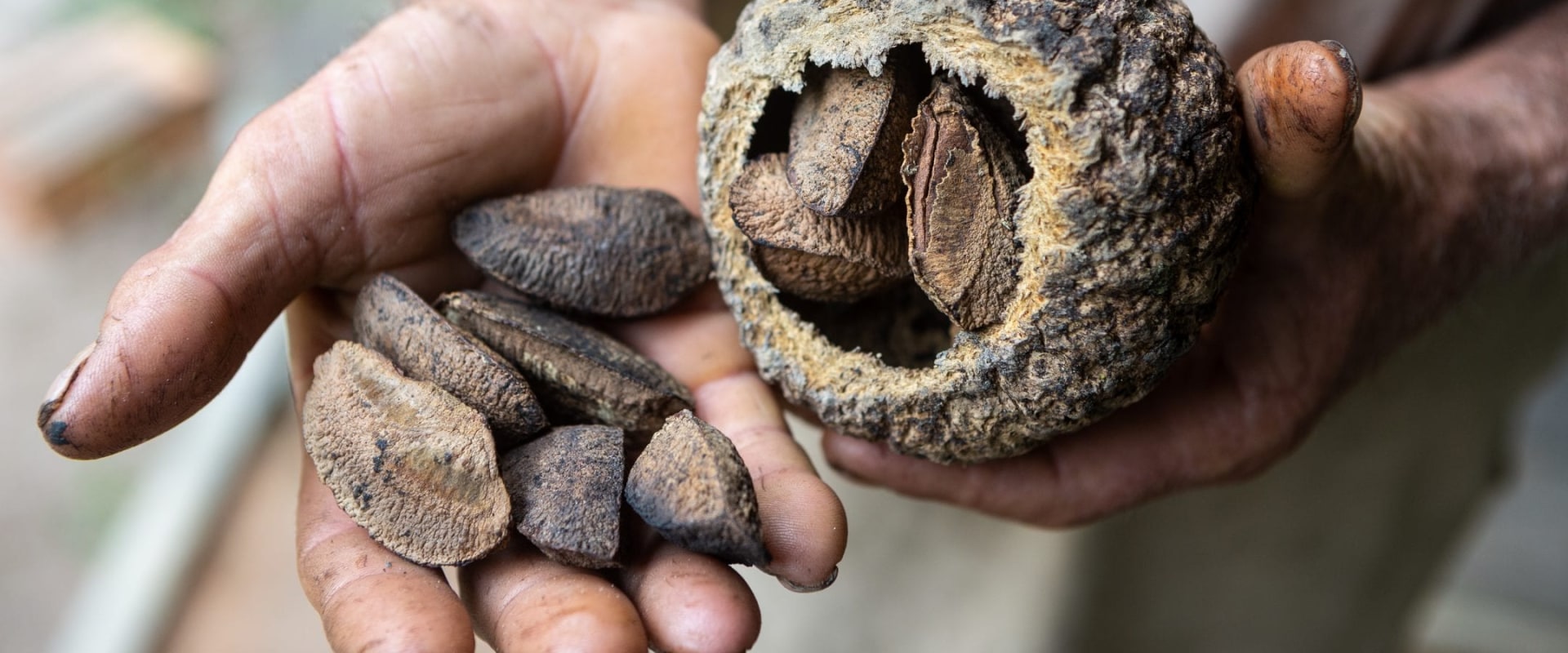The fruit of the Brazil nut is similar to coconuts, typically round shells measuring between 10 and 15 cm in diameter and containing between 18 and 20 seeds that have their own hard, woody shell. This is the reason why Brazil's “nuts” are considered seeds. Technically, a nut is a single-seeded fruit with a hard, dry outer wall that doesn't break when ripe. Therefore, because there are up to 25 of them in each coconut pod, Brazil nuts are classified as seeds.
Since Brazil nut is a botanical seed, unlike botanical nuts, the density of the fruit causes it to sink in fresh water. It takes about 14 months for the fruit to ripen once pollinated. The resulting fruit is quite large (4-6 inches (10-15 cm). Within the hard, woody shell, 8 to 24 clearly triangular seeds reside packed together like orange wedges.
These seeds are what we call Brazil nuts. Nuts, botanically speaking, are actually an indehiscent fruit with a hard shell like an acorn. Despite its name, Brazil nut is technically a seed rather than a nut. By definition, nuts are hard-shelled fruits that contain a single large seed.
Walnuts and pistachios are good examples. Participants in the Brazil nut group had higher levels of selenium and increased activity of an antioxidant enzyme called GPX3. Growing your own Brazil nuts will require a little patience, and while difficult, it's a rewarding endeavor. The concentration of selenium in Brazil nuts varies according to the amount present in the soil, so each nut may contain a different amount. Both Bolivians and rural Brazilians rely on the collection and sale of Brazil nuts as their main source of income.
Brazil nuts are one of the most valuable non-wood products in the Amazon, but they are extremely sensitive to deforestation, due to their complex ecological requirements. The culinary definition of a nut is much simpler and incorporates a whole range of edible parts of the plant. In botanical terminology, a nut is a type of fruit, so the Brazil nut would have been more appropriately called “Brazil seed”. A quantity of 100 g (3+1⁄2 oz) (75% of a cup) of Brazil nuts contains a rich content of thiamine (54% DV), vitamin E (38% DV), magnesium (106% DV), phosphorus (104% DV), manganese (57% DV) and zinc (43% DV).
The Brazil nut flower is large, about two inches in diameter, and fleshy, and the male part of the flower has a structure not found in any other plant family in the world. The Brazil nut family, Lecythidaceae, belongs to the order Ericales, as do other well-known plants such as blueberries, blueberries, sapote, gutta-percha, tea, phlox and persimmons. Many forest communities rely on the collection and sale of Brazil nuts as a vital and sustainable source of income, and sweet nuts provide protein and calories to tribal, rural, and even urban Brazilians. In its native habitat, Brazil's enormous chestnut tree competes with another giant of the rainforest, the strangler fig (Ficus species).
Brazil nuts are among the richest dietary sources of selenium, an essential mineral with antioxidant properties.

Leave Message